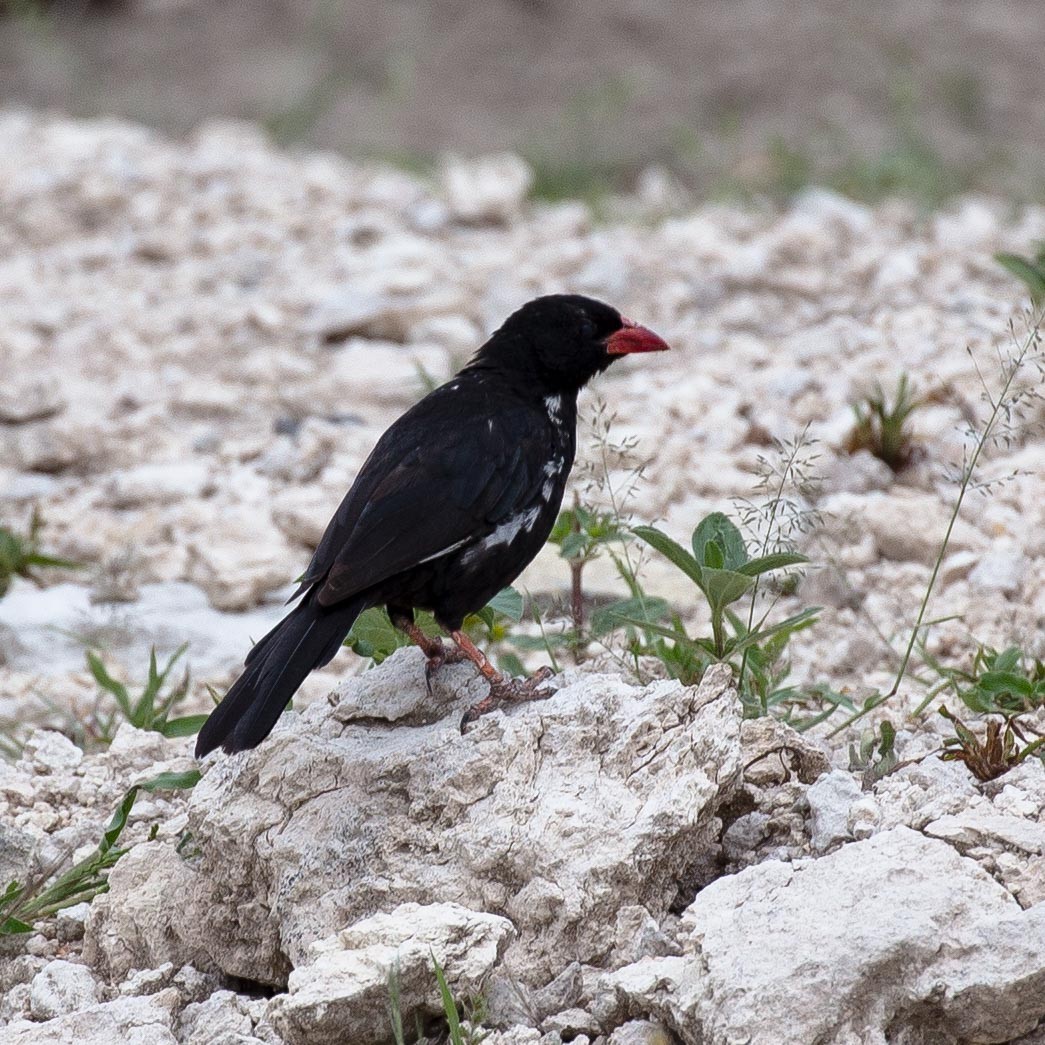Red-billed Buffalo Weaver
A species of Black Buffalo-weavers Scientific name : Bubalornis niger Genus : Black Buffalo-weavers
Red-billed Buffalo Weaver, A species of Black Buffalo-weavers
Botanical name: Bubalornis niger
Genus: Black Buffalo-weavers
Content
Description General Info
 Photo By Ragnhild&Neil Crawford , used under CC-BY-SA-2.0 /Cropped and compressed from original
Photo By Ragnhild&Neil Crawford , used under CC-BY-SA-2.0 /Cropped and compressed from original Description
The body length of approximately 24 cm and the weight of 65 g place rank this as one of the largest of the Ploceidae (weaver birds). Visually the sexes are not greatly differentiated from one another. The red-billed buffalo weaver is differentiated from the white-billed buffalo weaver (Bubalornis albirostris) by the color of its bill. The feathers of the male are dark chocolate brown in color. The front wing edges and the wing tips are flecked with white. His bill is a shade of red. The eyes are brown and the feet are reddish brown. The female's body is also colored dark chocolate brown, without the white flecks on the wings. However, her chin and throat feathers include broad white colored hems. Her eyes are dark brown and her legs light brown. Adolescent birds are a lighter shade of brown. 
Size
22 cm
Nest Placement
Tree
Feeding Habits
Red-billed Buffalo Weaver specializes in foraging on the ground for a diet comprising various insects, seeds, and fruits. This bird exhibits a preference for crickets, locusts, grasshoppers, and similar arthropods, as well as seasonal fruits and seeds, while not being majorly impacted by climate change in terms of food availability.
Habitat
Red-billed Buffalo Weaver thrives in dry savanna ecosystems and sparse woodlands, mostly in regions with vegetation like mopane and acacia-baobab, typically under 1500 meters elevation. The species adapts well to areas affected by human activities and grazing by large mammals. They favor landscapes where grass is trampled, creating ideal conditions for their colonial nesting in large trees. Their resilience to human disturbance supports their presence in increasingly urban landscapes, as these birds often coexist with human communities and livestock.
Dite type
Granivorous
General Info
Feeding Habits
Bird food type
Behavior
The red-billed buffalo weaver has been observed in small family groups or in large flocks. Males tend to be polygamous and control anywhere from one to eight nest chambers with three females. Typically there is one dominant male who controls the most chambers and the most females. The males in lower social positions control fewer chambers and fewer females. These males will defend their chambers and females by showing aggressive displays and giving loud calls. However, two males sometimes cooperate with each other to build the nest, defend their territory, and help feed the chicks. Females do not tolerate other females in their chambers while they are nesting and laying their eggs. Females typically feed the chicks (unless they are part of a cooperative breeding colony). The diet consists of insects, seeds, and fruit found near the nest. 
Species Status
The red-billed buffalo weaver is currently listed as a least concern (LC) on the IUCN status. While the global population of this species has not been estimated, this bird is considered common and the population is stable. There are currently no programs or organizations established to monitor and maintain the LC status of the bird. Predators of the red-billed buffalo weaver include hawks, eagles, snakes, and baboons. They prey on both adult and adolescent birds. 
Scientific Classification
Phylum
Chordates Class
Birds Order
Perching birds Family
Weavers Genus
Black Buffalo-weavers Species
Red-billed Buffalo Weaver